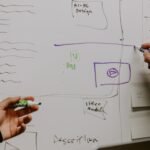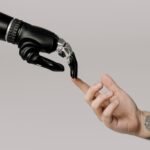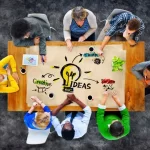The Evolution of Employee Benefits: Adapting to Changing Workforce Needs and Preferences
Employee benefits have come a long way from traditional offerings like health insurance and retirement plans. As the workforce evolves and becomes more diverse, so do the expectations and preferences of employees. Today’s employees seek benefits that not only support their financial security but also enhance their overall well-being, work-life balance, and professional growth. In this blog, we will explore how employee benefits have evolved over time to align with changing workforce needs and preferences, creating a more dynamic and inclusive workplace.
Traditional vs. Modern Employee Benefits:
- Traditional Benefits: In the past, employee benefits primarily focused on essentials such as health insurance, retirement plans, and paid time off. These benefits aimed to provide financial security and basic support to employees.
- Modern Benefits: Today, modern employee benefits encompass a wider range of offerings that cater to holistic well-being. These include mental health support, flexible work arrangements, professional development opportunities, wellness programs, and more.
Adapting to Changing Workforce Needs:
- Work-Life Balance: With remote work becoming more prevalent, employees now seek benefits that promote work-life balance. Flexible work hours, remote work options, and policies that discourage after-hours communication are becoming increasingly important.
- Mental Health Support: The focus on mental health has led to the inclusion of services such as counseling, therapy, and mindfulness programs as part of employee benefits. These offerings acknowledge the importance of emotional well-being.
- Professional Development: Today’s workforce values continuous learning and growth. Employers are offering opportunities for skill development, workshops, and tuition reimbursement to empower employees’ professional advancement.
- Diversity and Inclusion: Employee benefits are evolving to be more inclusive. Companies are offering support for diverse family structures, gender-neutral parental leave policies, and benefits that address the unique needs of different demographics.
- Financial Wellness: Beyond retirement plans, financial wellness programs help employees manage their finances, plan for major life events, and reduce financial stress.
- Wellness Initiatives: Wellness programs have expanded to include fitness classes, wellness challenges, and access to apps and resources that promote physical health.
- Remote Work Support: As remote work becomes more common, employers are providing technology stipends, ergonomic support, and resources to help employees create an effective home office environment.
The Benefits of Evolved Employee Benefits:
- Enhanced Employee Engagement: Modern benefits cater to employees’ holistic well-being, leading to increased job satisfaction, motivation, and engagement.
- Talent Attraction and Retention: Comprehensive benefits that align with changing needs attract top talent and improve employee retention rates.
- Improved Work Culture: Offering benefits that support work-life balance and mental health fosters a positive and supportive work culture.
- Productivity and Performance: Employees who feel well-supported are likely to be more productive, creative, and focused on their tasks.
- Employee Loyalty: When organizations invest in employees’ well-being and growth, it creates a sense of loyalty and commitment.
The evolution of employee benefits reflects the changing dynamics of the modern workforce. By adapting to the diverse needs and preferences of employees, organizations can create an inclusive and supportive work environment. Comprehensive benefits that prioritize holistic well-being, work-life balance, and professional growth not only attract and retain talent but also contribute to a more engaged, motivated, and productive workforce. As the workforce continues to evolve, so too will the landscape of employee benefits, ensuring that they remain aligned with the ever-changing needs of employees.

































